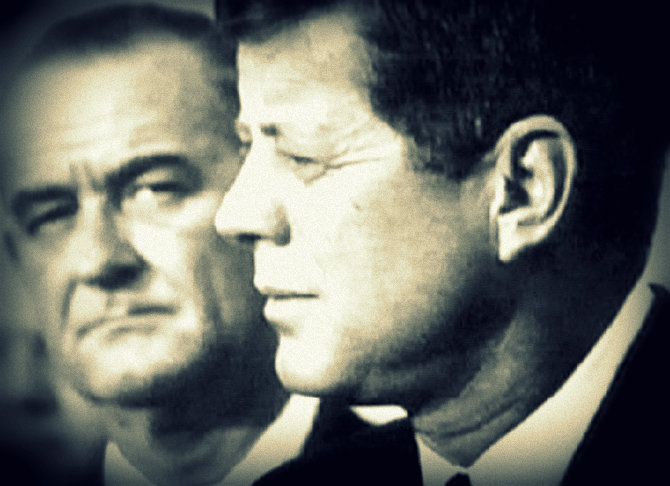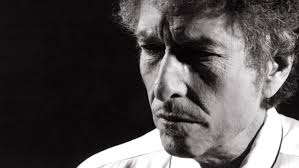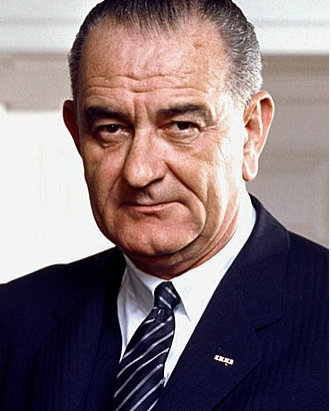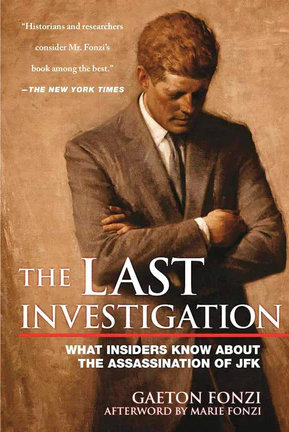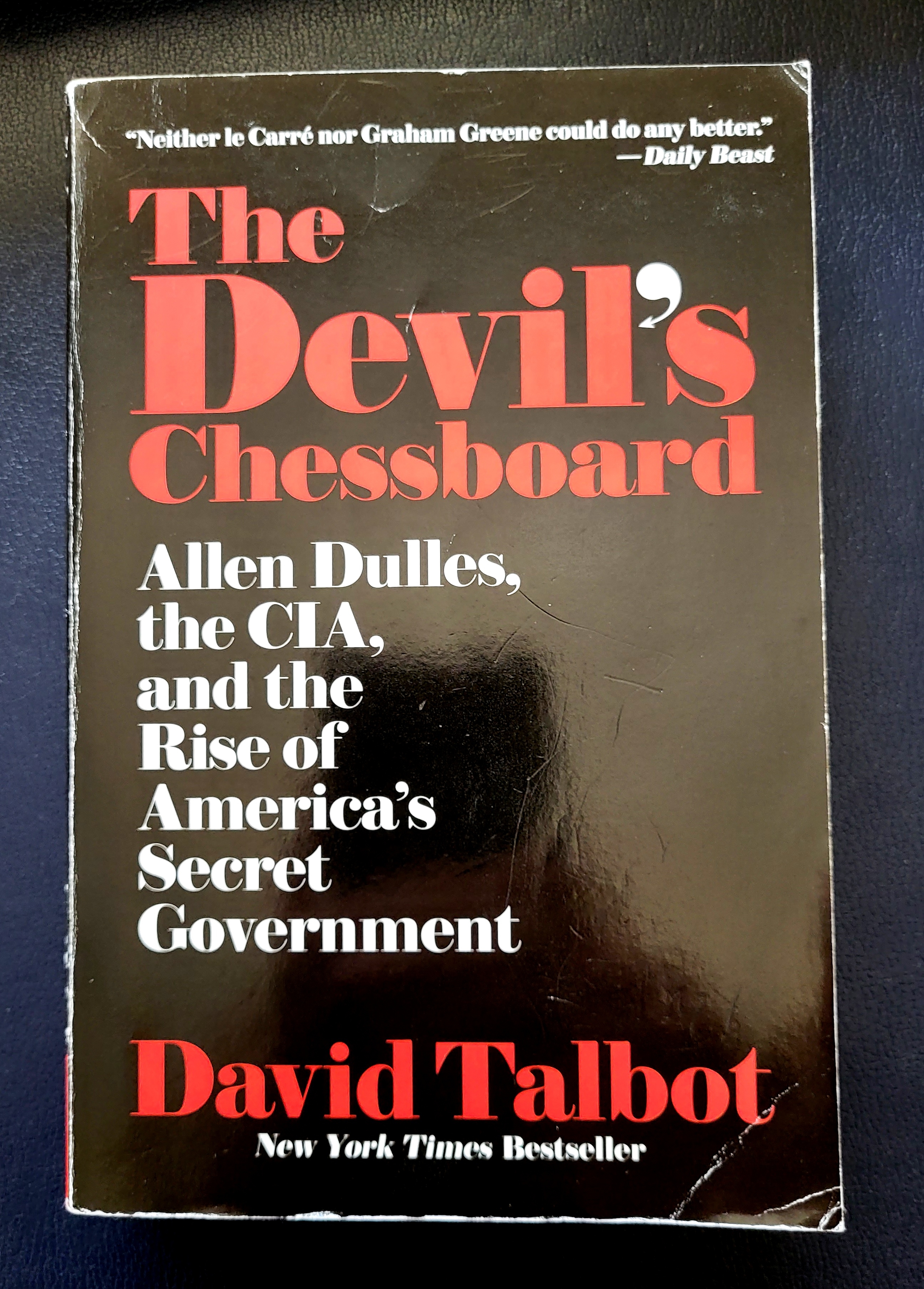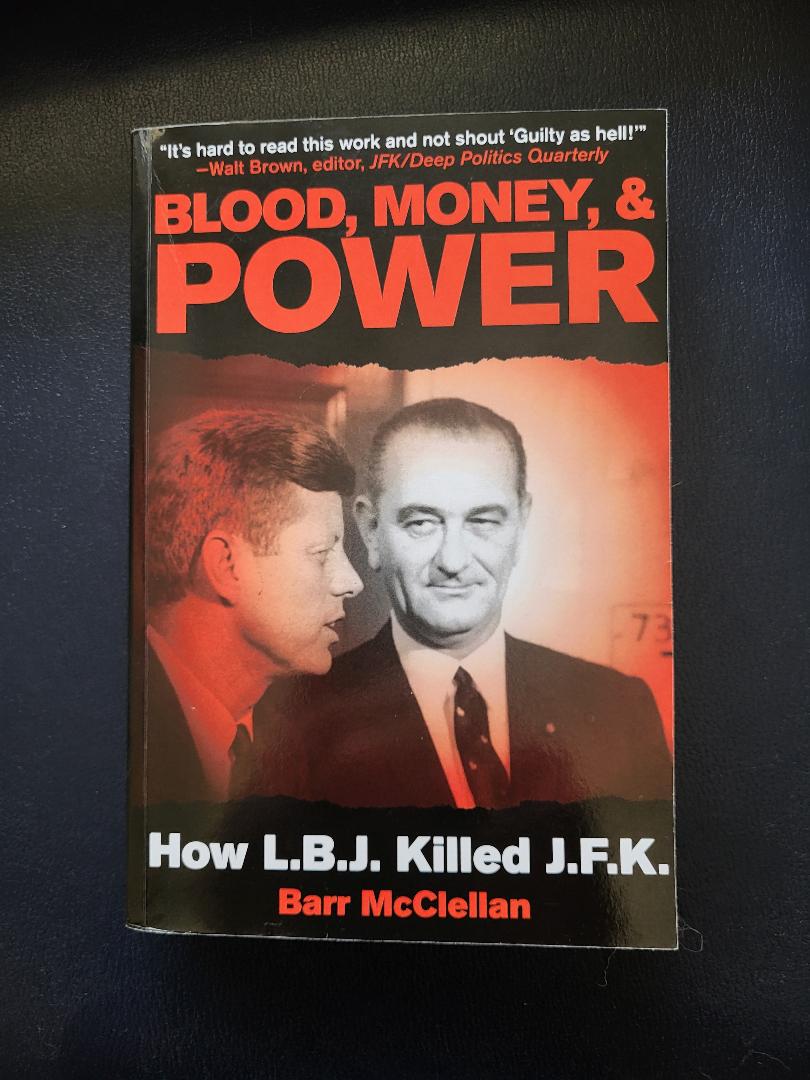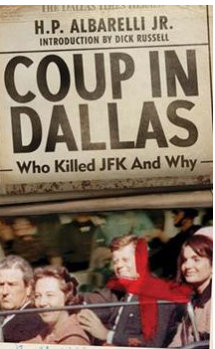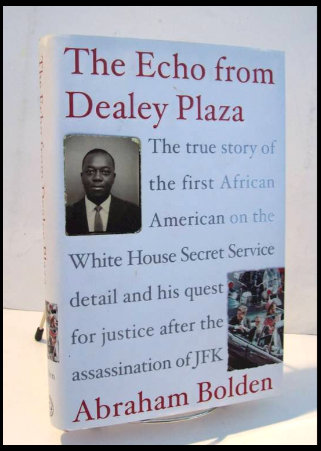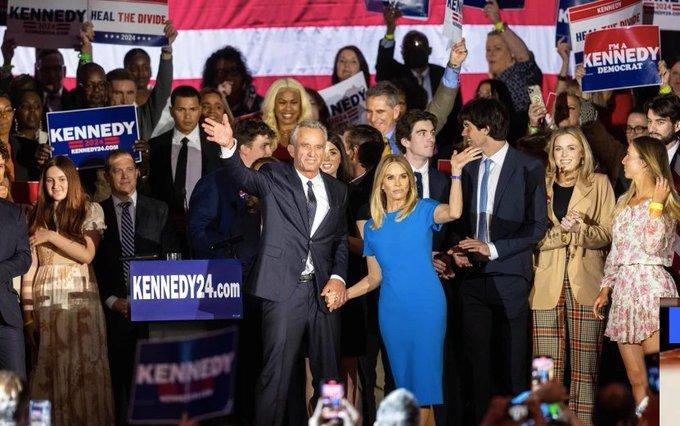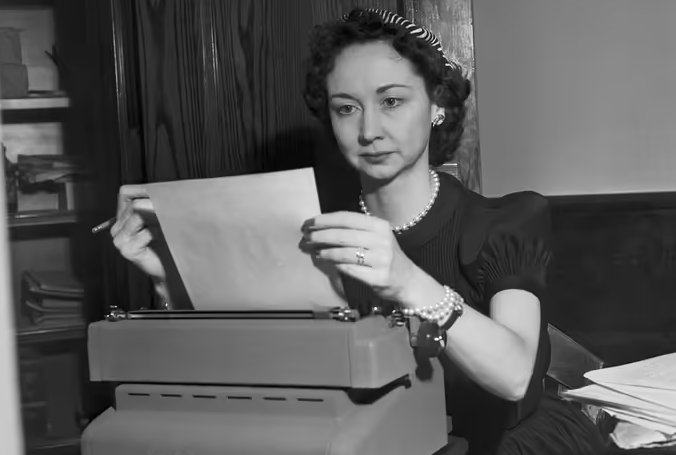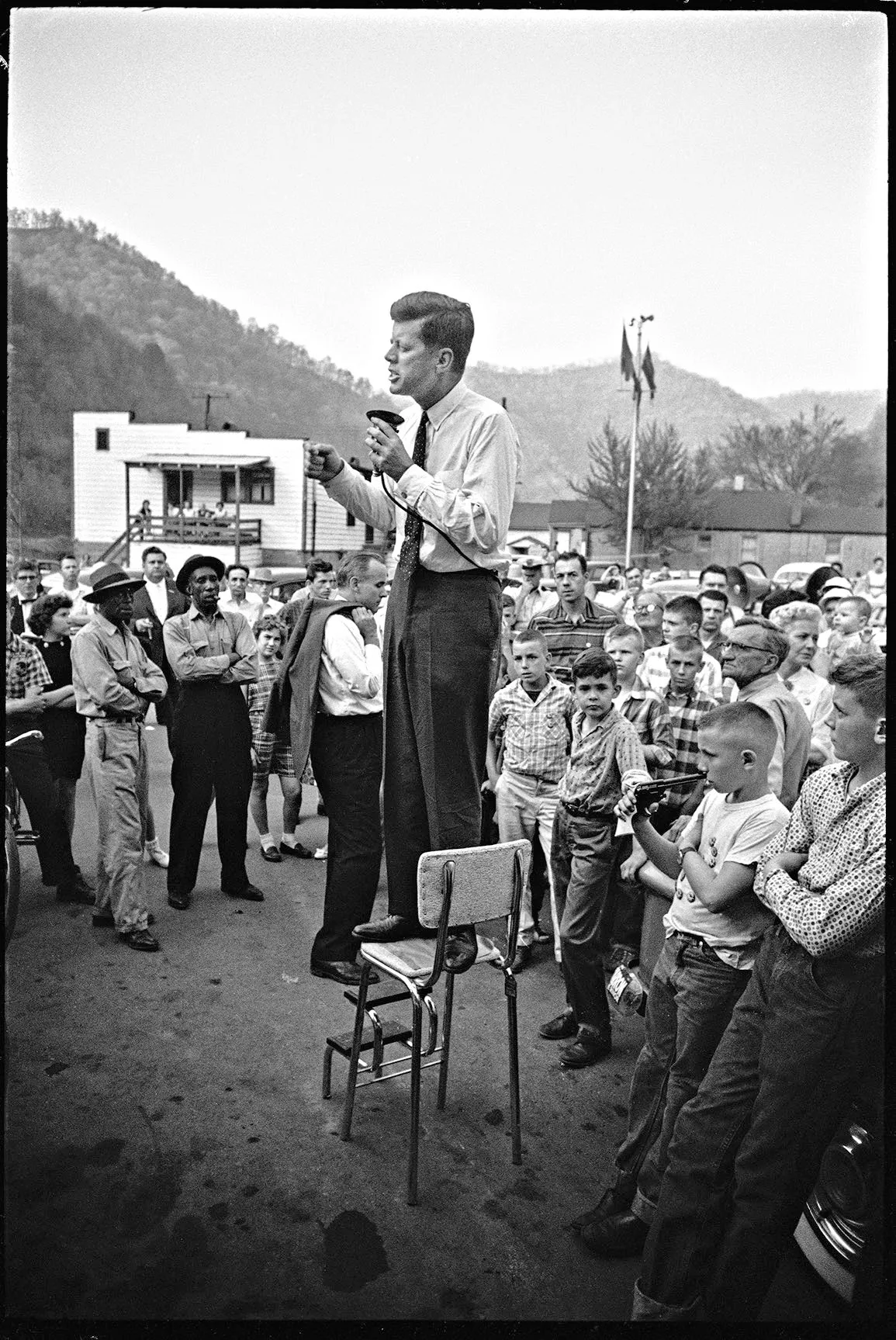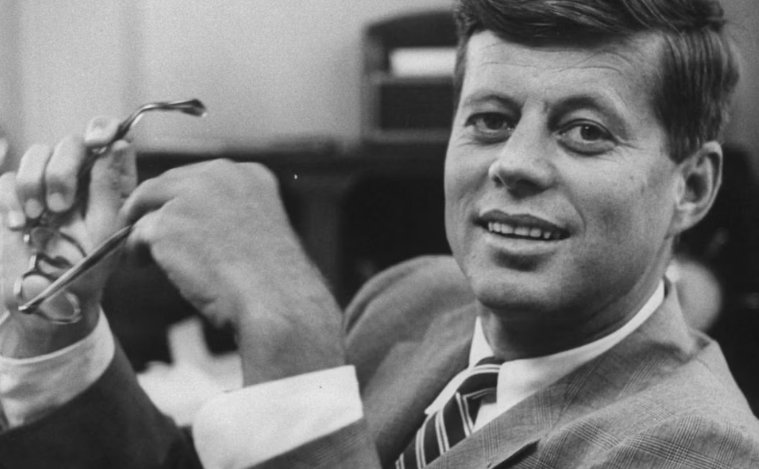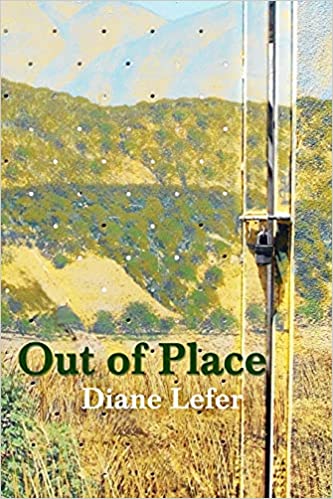New Nonfiction by M.C. Armstrong: “Murder Most Foul: The Role of Lyndon Johnson in the Murder of John F. Kennedy”
What is the truth, and where did it go?
Ask Oswald and Ruby, they oughta know.
“Shut your mouth, ” said the wise old owl.
Business is business, and it’s a murder most foul.
-Bob Dylan, Murder Most Foul
Doyle Whitehead flew Air Force One on November 22, 1963, the day JFK was killed in Dallas, Texas. Whitehead waited a long time before speaking up about the assassination of John F. Kennedy. He enlisted in the Air Force after graduating from Oxford High School in 1954. In 1959, after one of Dwight Eisenhower’s Air Force One stewards suffered a heart attack, Whitehead subbed in and became part of the executive detail. It was while serving on Air Force One that Whitehead came to know Kennedy. Caroline, JFK’s daughter, called the steward “Whitey.”
“Did you know I have a steward on my plane who went to Oxford?” Whitehead remembers the president teasing on occasion.
“People celebrated on the plane ride back to Washington,” Whitehead said in 2016. “They were laughing and talking about ‘what we gon do now.’ They were so loud we had to shut the door so Jackie wouldn’t hear them.”[i]
Only hours earlier, Johnson was being investigated for corruption by the Senate Rules Committee.[ii] As recently released evidence reveals, Kennedy was about to drop Johnson from the 1964 ticket.[iii] Thus, flying back to DC, drinking nearly a fifth of Cutty Sark whiskey on the way, LBJ had reason to celebrate. His job was secure. And as President of the United States, he now possessed control of the investigation into the murder of JFK.
The Radioactive Belief
In 2020, at the beginning of the pandemic, the Nobel Prize-winning songwriter Bob Dylan released “Murder Most Foul,” a seventeen-minute ballad about the death of President Kennedy. Many writers reported on the song’s length and surprise surge to the top of the Billboard charts. But Richard Eskow wrote, “most commentators tiptoed around the true news value: a major cultural icon has boldly given voice to a widely held but professionally radioactive belief: that John F. Kennedy was killed, not by the lone nut,’ Lee Harvey Oswald, but as part of a plot that was tantamount to a coup d’etat.”[iv] Is America finally ready to have an adult conversation about this “radioactive belief”?
It is time to reclaim the narrative of the Kennedy assassination from the propaganda machine Lyndon Johnson catalyzed when he commissioned the Warren Report, the official government version of the JFK assassination. Johnson played a hand in the murder of President Kennedy and America needs to reckon with what this means for our democracy. To be sure, we must be careful when handling the reputation of a public figure, especially one like Johnson whose presidential achievements in civil rights tie his story to so many others. But America is a deeply divided country whose democracy is in danger. The post-truth moment we find ourselves in will not go away by continuing to dance around the history of the coup in Dallas.
Dylan writes, in “Murder Most Foul,” that “We’ll mock you and shock you and put it in your face/We’ve already got someone here to take your place.”[v] But who was the “we” and what was Johnson’s role in the conspiracy? In November of 2022, longtime JFK assassination researcher Jefferson Morley asked on Twitter, “What’s the evidence tying LBJ to the crime or to Oswald? I don’t know of any.”[vi] Morley is not alone in viewing the LBJ theory as a hidden history. But there is a mountain of evidence hiding in plain sight to indict Johnson and demonstrate that he was the mastermind of the coup.
Nobody but Johnson had the means, motive and opportunity to kill Kennedy, and those who knew LBJ left behind a trail of transactions, confessions, and forensic evidence. As members of Kennedy’s Secret Service acknowledged after the murder, there were multiple conspiracies to kill JFK in the fall of 1963, such as one in Chicago just a month before Dallas.[vii] To pull off a coordinated attack against a formidable security apparatus required a command of the police on federal, state, and local levels. The fact that the successful plot finally played out in Johnson’s home state of Texas is no coincidence.
We cannot comprehend Johnson’s role in the plot without understanding the network of supporters he cultivated from his earliest years as a Congressman from Texas, among these being Herman Brown, Johnson’s number one source of money. Johnson’s “power base,” in historian Robert Caro’s words, “wasn’t his congressional district, it was Herman Brown’s bank account . . . His power was simply the power of money.”[viii] To understand Johnson’s part in the killing of Kennedy, we must map the finances and motives of the men who depended on Johnson’s access to Washington. Among these were three key figures: Herman Brown, the oilman D.H. Byrd and Ed Clark, Johnson’s attorney and a former lawyer for Brown and Root. The story of the Kennedy assassination is the map of Texas power. The “we” Dylan describes in his song is the bipartisan war industry that depended on Johnson for their work, both at home and abroad.
Forensic Evidence & CIA Confessions
Dylan’s “we” suggests that the Warren Commission’s official story of a lone nut assassin was a myth and that there was a second shooter stationed atop a slope of grass in Dealey Plaza. The songwriter sings, “Put your head out the window, let the good times roll/There’s a party going on behind the grassy knoll.”[ix] Twenty-first century scholarship supports Dylan, revealing that the decisive headshot from frame 313 of the Zapruder film was, in fact, from an angle consistent with the location of the grassy knoll. In a 2001 issue of Science and Justice, a quarterly from Britain’s Forensic Science Society, a government researcher named D.B. Thomas claimed that there was more than a ninety-six percent certainty that the infamous headshot came from the front right of JFK’s limousine and, more specifically, from the grassy knoll, not the Texas School Book Depository.[x] Thomas’ article, supported by Josiah Thompson’s 2021 study, Last Second in Dallas, refutes the Warren Commission’s 1964 “lone nut” theory and affirms the findings of the 1978 House Select Committee on Assassinations who argued the president’s murder was most likely the “result of a conspiracy.”[xi]
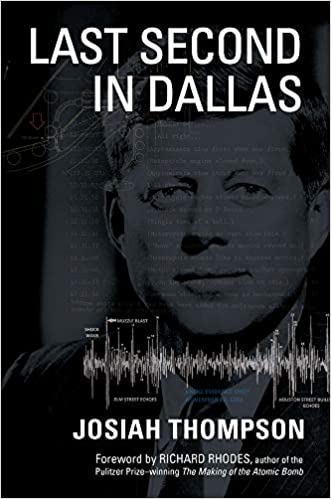 The power of Last Second in Dallas is a function of Thompson’s methodology “that ignores the sexy and elusive” question of “whodunnit?”[xii] Like the scholarship of D.B. Thomas, Thompson takes us back to the fundamental questions of forensic data such as “Were there multiple shooters?” and “Where did the shots come from?” By focusing rigorously on the forensic analysis, Thompson creates a firm foundation for investigators to now concern themselves with the question of culpability. The answer, in line with the work of researchers like James W. Douglass, Gaeton Fonzi, Oliver Stone, and David Talbot is that the CIA, using Cuban and mafia assets, murdered JFK, with Allen Dulles playing a key hand.
The power of Last Second in Dallas is a function of Thompson’s methodology “that ignores the sexy and elusive” question of “whodunnit?”[xii] Like the scholarship of D.B. Thomas, Thompson takes us back to the fundamental questions of forensic data such as “Were there multiple shooters?” and “Where did the shots come from?” By focusing rigorously on the forensic analysis, Thompson creates a firm foundation for investigators to now concern themselves with the question of culpability. The answer, in line with the work of researchers like James W. Douglass, Gaeton Fonzi, Oliver Stone, and David Talbot is that the CIA, using Cuban and mafia assets, murdered JFK, with Allen Dulles playing a key hand.
But we must now go one step further and share the big open secret in Texas: Lyndon Johnson sat at the top of the plot’s chain of command. Johnson, Kennedy’s Vice-President, ordered the hit and, through his attorney, Ed Clark, played a decisive role in the orchestration of both the assassination and the cover-up.
To prove this point, we must step behind the curtain of attorney-client privilege. Barr McClellan, who was the father of Scott McClellan, the press secretary for George W. Bush, was employed by the Johnson administration (National Labor Relations Board and Federal Power Commission) and served as a Johnson attorney from 1966 through 1971, working under Ed Clark and Don Thomas at Clark, Thomas and Winters. For decades, McClellan maintained a silence consistent with the code of confidentiality that attends lawyer-client relations. However, like Whitehead, McClellan felt an obligation to tell the truth before it was too late. In 2003, forty years after the murder of the President, McClellan wrote Blood, Money, & Power: How LBJ Killed JFK. What McClellan’s book reveals is a man who was an eyewitness to history and intimately understood why Johnson had Kennedy murdered: to end a government investigation into Johnson’s corruption. In 1973, the same year LBJ died, Don Thomas confessed to McClellan the firm’s role in the assassination and that Ed Clark was the figure who planned the hit. McClellan writes, “Edward A. Clark, attorney at law, Johnson’s right-hand man and the only man he trusted, was the key man in the scheme that culminated in Dallas on November 22, 1963.”[xiii] McClellan’s book investigates Johnson’s hand in the assassination, Johnson’s theft of the 1948 Senatorial race (Don Thomas stuffed the ballot box in Precinct 13), and also explores LBJ’s relationship with Malcolm “Mac” Wallace, whom McClellan claims was responsible, at Johnson’s behest, for the 1961 murder of government investigator Henry Marshall. McClellan writes that Johnson was a “psychopath” and capable of murder and that the Wallace case offers precedent for the murder of JFK.[xiv] Recent scholarship from Jeremy Kuzmarov supports the claim that Johnson had plotted other murders before Kennedy’s. McClellan, in his book and Kuzmarov in his article, “Was LBJ A Serial Killer Who Advanced His Career by Murdering 6 Other Men Who Stood in His Way?”, both reveal a nexus of Texas corruption (“Bubba justice”) that resonates with this student of the Iraq war under Bush and Cheney.[xv] But before the Kellogg, Brown, and Root that regulated the burn pits of the Global War on Terror, there was the Brown and Root that served Lyndon Johnson and his corporate partners in Vietnam.
McClellan points readers toward a “money trail” that shows contracts at risk before November 22, 1963, and contracts secured after the assassination. On January 17, 1963, John F. Kennedy proposed the repeal of the famous “oil depletion allowance,” a revision to the tax code that would have cost Texas oilmen up to $300 million a year.[xvi] In addition to documenting these provocatively progressive policies from Kennedy, McClellan goes beyond circumstantial evidence and delivers forensic data that places the fingerprint of Wallace, Johnson’s henchman, on the sixth floor of the Texas School Book Depository on the day of Kennedy’s murder. Furthermore, the Wallace print has now traveled through a blind submission peer-review process and has been confirmed by two independent researchers, including Interpol print examiners in Paris, France.[xvii]
The Wallace print is significant and so is the precedent of the Marshall case. In 1961, Henry Marshall was himself investigating Johnson and another LBJ aide, Billy Sol Estes. Wallace, implicated in Marshall’s murder, was spotted at the Texas School Depository on November 22, 1963, by a Chickasaw Indian named Loy Factor who claimed that he himself—Factor—was part of the kill team. Factor’s statement and Wallace’s fingerprint in “the sniper’s nest,” places Johnson’s key fixer at the scene of the crime. But Whitehead and McClellan’s disclosures, Factor’s eyewitness account, and Wallace’s fingerprint (available for viewing in the National Archive) do not close the case of the Kennedy assassination. No single data point does. As Jim Marrs, the author of Crossfire: The Plot That Killed Kennedy, writes, “when it comes to the assassination of President John F. Kennedy, don’t trust any one source.”[xviii] Let it be clear: McClellan is not the only witness indicting Johnson. So let the story now turn to corroboration from participants in the coup: E. Howard Hunt and David Morales.
Famous for his role in the Watergate break-in, Hunt was also a novelist and screenwriter, as well as a friend of former CIA Director, Allen Dulles. Hunt, who died on January 23, 2007, admitted to being a “benchwarmer” on the CIA team that murdered JFK.[xix] Hunt’s testimony, published on the pages of Rolling Stone and Wired in 2007, can also be located in his son Saint John’s 2008 memoir, Bond of Secrecy.[xx] In the map of the hit that he provided to Saint John, Hunt places the name “LBJ” at the top of “the chain of command.” Beneath LBJ is a CIA agent named “Cord Meyer,” a man whose estranged wife, Mary, was a mistress of JFK and was herself murdered less than a year after the president. In addition to this “chain of command” map, Hunt provides a timeline for a plot that begins in 1962 and includes the names of CIA agents Marita Lorenz, David Atlee Phillips, and David Morales. Lorenz, Phillips, and Morales, separately, claimed Kennedy’s death was a CIA hit, but Morales went further, arguing, like Hunt, that Johnson approved the plot.[xxi][xxii] Even more than this, “According to his lawyer, Robert Walton, Morales revealed that he [Morales] was involved in both Kennedy assassinations.”[xxiii] Yes, Morales’ and Hunt’s story point straight at the man McClellan accused and the same man Whitehead heard laughing and celebrating on November 22, 1963: Lyndon Johnson.
“Business is business”: The Money Trail
Clare Boothe Luce, former Congresswoman and the wife of Henry Luce, the media magnate who founded Time, Life, Fortune and countless other mainstream media publications, knew a thing or two about power and propaganda. On the way to JFK’s inaugural ball in 1961, Luce asked the new Vice-President, Lyndon Johnson, if he minded being relegated to the number two spot. She asked Johnson to “come clean.”
“Clare,” Johnson replied, “I looked it up. One out of every four presidents has died in office. I’m a gamblin’ man, darlin’, and this is the only chance I’ve got.”[xxiv]
If Johnson rolled the dice and was indeed the figure at the top of the chain of command for the assassination of JFK, why should we care, now that both men are dead? Sixty years later, what does this story tell us about contemporary America where this is still so much talk of coups, corruption, and treason? In order to comprehend government corruption we have to understand how corporate power captures government agencies and assets. We cannot fully fathom the means and motives of Johnson without understanding America’s permanent war party, the ongoing bipartisan social network of politicians and their clients in the military-industrial community. In order to contextualize the killing of Kennedy, we have to study the city and state of “The Big Event,” as the CIA called the assassination.[xxv] If Johnson ordered “The Big Event,” and Clark and the CIA orchestrated the logistics and Brown was one of Johnson’s primary financial backers, who in Dallas facilitated the placement of Lee Harvey Oswald in the Texas School Book Depository?
In 2021, the year after Dylan released “Murder Most Foul” and the same year Thompson published Last Second in Dallas, the historian H.P. Albarelli published a posthumous book called Coup in Dallas. Based on the 1963 datebook of CIA operative, Jean Pierre Lafitte, Coup in Dallas offers readers a primary document that maps the cast behind “The Big Event.” On November 23, 1963, Lafitte writes, “Rene says, ‘Coup de grace.”[xxvi] “Rene” was the name of Lafitte’s wife, the woman who gave Albarelli the datebook. Rene Lafitte once remarked, “Dallas, ah goodness, I’m not sure what to say . . . I wasn’t there anywhere near as often as Pierre . . . not at all. But Pierre would say it was . . . Dallas was like the arms and legs of the American secret service, your CIA.”[xxvii] Albarelli’s book shines a light on the major players in the coup and pays particular close attention to Johnson’s friend, D.H. Byrd.
Other than C.I.A allegations, eyewitnesss accounts, and the fingerprint of Mac Wallace, how else do we answer Jefferson Morley’s question and connect Oswald to Johnson? The answer is David Harold “Dry Hole” Byrd, the military subcontractor, Texas oilman, and founder of the Civil Air Patrol, to which Oswald belonged as a teenager. Incidentally, Byrd also owned the building that contained the Texas School Book Depository where Oswald was employed on the day of the assassination. Byrd was a crony of Johnson and once said, “Sam Rayburn, Morrie Shepard, John Connally, and Lyndon Johnson on the national scene were to become men I could go to anytime that I wanted action, and so were a succession of Texas governors.”[xxviii] Like Brown, Byrd knew Johnson personally, stood to profit greatly from a Johnson presidency, and, likewise, stood to absorb substantial losses if the oil depletion allowance was allowed to expire or if Johnson went to prison. We may never know for sure whether Oswald was a whistleblower, CIA double-agent, or “patsy” (as he claimed on TV), but what is now irrefutable is the fact that there were multiple shooters and that on November 22, 1963, Oswald was working in the building Byrd had purchased just the year before and where a fingerprint of Johnson’s fixer, Mac Wallace, was discovered by police.[xxix]
McClellan, Byrd, Clark, Hunt, Factor, Wallace, and Morales all tie Johnson to Kennedy’s killing. McClellan claimed that Johnson’s attorney, Ed Clark, was horrified when Oswald wasn’t murdered after the assassination but was instead arrested and allowed to speak on TV and declare he—Oswald—was a “patsy.”[xxx] McClellan provided his colleague’s confession and Wallace’s fingerprint as evidence to connect Johnson to the crime of the century, but also insisted that researchers follow the money trail of Johnson’s social network in order to witness foreknowledge of the plot. Nowhere is the advance intelligence more apparent than in the pre-assassination stock trades of Byrd and his associate at Ling-TEMCO-Vought (LTV), James Ling, former employer of Mac Wallace. LTV, perhaps the inspiration for “Vought International” from the Dynamite Comic series, was one of the largest engineering and manufacturing conglomerates in the United States in 1963. Like with Brown and Root, the profits of Vought went through the roof in the years after JFK’s murder. Right before the assassination, Ling and Byrd, through an investment vehicle called the Alpha-Omega Corporation, “purchased 132,600 shares of LTV stocks for around $2 million.”[xxxi] LTV was responsible for developing a number of planes and weapons that were used during the Vietnam War. According to Albarelli, the “$2 million investment by Byrd/Ling was worth $26 million by 1967.”[xxxii] As Johnson reversed the Kennedy policy of withdrawal from Vietnam and the war progressed, LTV “would consistently be among the top-ten aerospace companies in dollar volume of prime contracts.”[xxxiii] Which is to say, Byrd got rich off the coup in Dallas, and so did Clark and Brown of Brown and Root, later renamed KBR. Lyndon Johnson was the savior of the military-industrial complex. So much depended on that day in Dallas.
“Lyndon Johnson Did It”
Critics might reasonably ask, “Where are the stories of the marginalized?” in the history of the Kennedy assassination? How do we summon the voices of the millions dead in Vietnam? We can’t possibly tell the tales of all the people around the world who were impacted by Kennedy’s murder. But perhaps some small measure of justice can be achieved by listening to four American citizens whose stories have been muted by the media. So, let us turn here in the end to Abraham Bolden, Evelyn Lincoln, Jacqueline Kennedy, and Dorothy Kilgallen.
On April 26, 2022, President Biden pardoned Bolden, a man JFK called “the Jackie Robinson of the Secret Service,” which is to say the first Black Secret Service agent to serve on White House detail. Bolden was hired by Kennedy and then later challenged Johnson and the Warren Commission with Secret Service evidence of conspiracies to kill Kennedy prior to the release of the Warren Report.[xxxiv] Was Bolden rewarded for his bravery? No. Like so many who came after him, Bolden was attacked for telling the truth and on May 18, 1964, Bolden was thrown in prison for bribery, conspiracy, and obstruction of justice.
Bolden committed a narrative violation. Decades before Snowden, Assange, Hale and Manning, Bolden blew the whistle on the military-industrial complex. He told the truth. For sixty years, Bolden claimed he had been framed by the very government he took an oath to serve. He has stated to this writer and others that he heard Johnson threaten both Kennedy brothers while serving in the White House.[xxxv] In the twenty-first century, Bolden has been forceful about his analysis of the killing: “[T]he assassination of the president went to the highest position of government,” he said in a 2018 interview. “There was a coup to take him [Kennedy] out of power.”[xxxvi] Like “many in the DFS” (Mexican CIA), Bolden’s investigation of the murder points to “the highest position in government.”[xxxvii] But for a long time, Bolden, author of The Echo from Dealey Plaza, has been ignored by America’s mainstream media. Fortunately, with the help of journalists, President Biden heard Bolden’s story before it was too late. In January of 2022, Mary Mitchell, writing in the Chicago Sun-Times, published an editorial in which she wrote, “While Bolden’s life story might seem like a conspiracy theory to some, Black Americans will identify with the brand of injustice that buries its victims under false accusations and legal documents.”[xxxviii] Mitchell’s voice, amplifying Bolden’s, was legitimated by Biden, the man who now keeps a bust of Robert F. Kennedy in the Oval Office and is currently being challenged by Robert F. Kennedy, Jr. for the 2024 Democratic nomination.
Perhaps part of RFK Jr.’s challenge to Biden has something to do with Biden’s refusal to go all the way in the story of Kennedy’s uncle. Robert F. Kennedy, Jr., whose career and campaign platform focuses on government corruption and agency capture, may be the only American capable of compelling Biden to open the assassination archives. Certainly, others are trying. In October of 2022, The Mary Ferrell Foundation sued the Biden administration for once again postponing the release of the JFK files.[xxxix] In December of 2022, the Biden administration ordered the release of more than 13,000 records, but caved to the CIA’s appeal to maintain the redaction of more than 4,000 others.[xl] Why does the censorship persist? Is this just institutional protection or is something else at play? And beyond the redaction and withholding of documents, why does the American media refuse to listen to the people closest to this case? What did Evelyn Lincoln, Kennedy’s secretary and a passenger in the motorcade, say at the time of the assassination and how did Jackie Kennedy, covered in the blood of her dead husband, view the crime she witnessed?
Lincoln, who was fifty-four on the day of the murder, visited JFK’s grave every year on November 22nd. On the plane ride back from Dallas, the same flight where Whitehead overheard Johnson celebrating, Lincoln wrote down a list of suspects. At the top of her list was the same name at the top of Hunt’s deathbed chain of command: “Lyndon.”[xli] Was Lincoln the only one on Air Force One who felt she was travelling with the architect of a coup?
No.
Jackie Kennedy knew what many in DC knew about her husband’s relationship with both LBJ and Allen Dulles. She knew that her husband loathed the Vice-President and that the ex-head of the CIA resented her husband after JFK fired Dulles subsequent to the disastrous failure of the Bay of Pigs invasion of Cuba. Did Jackie see the pictures in the Chicago Tribune on August 15th, 1963, three months before her husband’s murder, revealing Dulles meeting with LBJ at the Vice-President’s ranch? Did she ever come to find out that Dulles, who kept a meticulous datebook, left that particular encounter with LBJ off the record?[xlii] We may never know the answer to these questions, but we do know that on November 22, 1963, Jackie Kennedy was an eyewitness to a crime that traumatized her, her family, her nation, and countless others beyond America’s borders. We also know that Jackie, like her brother-in-law, Robert F. Kennedy, suspected a conspiracy from the very beginning.
RFK once famously said, “If the American people knew the truth about Dallas, there would be blood in the streets.”[xliii] Jackie Kennedy knew there was a conspiracy. She was caught in the crossfire. Hours after the assassination, while aboard Air Force One with Whitehead and Johnson, she considered her grisly appearance. “My whole face was splattered with blood and hair. I wiped it off with a Kleenex,” she said. But then, “one second later I thought why did I wash the blood off? I should have left it there, let them see what they’ve done.”[xliv] Jackie knew from the start that her husband’s murder was the work of more than one lone communist nut bar. Her pronoun was “they.”
But Jackie went further.
According to Whitehead, after the assassination Johnson and his cronies were laughing and celebrating within earshot of the widow and were so out of hand that Whitehead had to hide Jackie away. Perhaps keeping this woman in the dark seemed an act of mercy in the moment, a gesture of compassion on behalf of “Whitey.” But the truth has a way of getting through those doors men close to protect women. No one was closer to the crime of the century than Jackie Kennedy. No one had a better seat for what Dylan called “the greatest magic trick ever under the sun.”[xlv] In the singer Eddie Fisher’s memoir, Been There, Done That, Fisher describes his relationship with Pamela Turnure, the press secretary for Jackie Kennedy at the time of the assassination. “On the flight back,” Fisher writes, “Pam told me, Jackie told her, ‘Lyndon Johnson did it.’ Words I’ll never forget.”[xlvi] Those words, like Bolden’s, Factor’s, Hunt’s, Lincoln’s, McClellan’s, Morales’, Whitehead’s and so many others, cannot stand alone. In this essay, however, they find accord. In closing, they stand here with the voices of Dorothy Kilgallen and Jack Ruby.
In “Murder Most Foul,” Dylan sings, “What is the truth and where did it go? Ask Oswald and Ruby, they oughta know.”[xlvii] Dorothy Kilgallen did ask Jack Ruby, the man who murdered Oswald on national television. Who was this fearless journalist who dared to question her government’s official narrative? According to Ernest Hemingway, Dorothy Kilgallen was “the greatest female writer in the world.”[xlviii] Kilgallen, in the final years of her short life, worked as a crime reporter and was about to publish a book about the Kennedy killing. But Kilgallen died on November 8, 1965, just before she could deliver the pages of Murder One to her publisher at Random House, Bennet Cerf.[xlix] However, history has documented that Kilgallen’s quest for the truth was focused on Ruby. Kilgallen attended the Ruby trial and was the only journalist granted a private interview.
In February of 1964, Kilgallen wrote, “It appears Washington knows or suspects something about Lee Harvey Oswald that it does not want Dallas and the rest of the world to know or suspect.” Kilgallen told her closest friends that her Ruby disclosures would “blow the JFK case sky high.”[l] But then, at the age of fifty-two, Kilgallen died of an “accidental overdose” of alcohol and barbiturates. Was she murdered because she knew too much? We may never know. But what the historical record can provide, even though her book and notes have disappeared, is the voice of Jack Ruby, the key to the Kennedy assassination, according to Kilgallen.
In a letter he sent to a friend while in jail, Ruby wrote: “I am counting on you to save this country a lot of bloodshed. As soon as you get out you must read Texan looks at Lyndon (reference to a book called A Texan Looks at Lyndon by J. Everett Haley), and it may open your eyes to a lot of things. This man is a Nazi in the worst order.”[li] Yes, Jack Ruby knew that Johnson was corrupt and part of the plot. Ruby shot Oswald to protect the cover story. Jack Ruby didn’t kill Lee Harvey Oswald out of love for JFK and he certainly didn’t do it out of love for the man he calls “a Nazi.” This pattern of focusing on LBJ can be further located in Ruby’s testimony to the Warren Commission and the videos of his brief exchanges with reporters.
“I wish that our beloved President Lyndon Johnson would have delved deeper into the situation,” Ruby said to the Warren Commission, but the Commission never granted Ruby his request to leave Texas and travel to DC where he felt he could tell the truth.[lii] So Ruby continued to hammer on the president in later interviews.
“The people that have had so much to gain and had such an ulterior motive for putting me in the position I’m in will never let the true facts come above board to the world,”[liii] Ruby said. When asked by a reporter to elaborate, Ruby who was himself about to die in 1967 (right after winning an appeal for a new trial), said, “I want to correct what I said before about the Vice-President.” He then continued. “When I mentioned about Adlai Stevenson, if he were Vice-President, there would have never been an assassination of our beloved President Kennedy.” The reporter asked Ruby to “explain again.”
“Well,” Ruby said. “The answer is the man in office right now.”[liv]
“[T]he man in office right now,” in 1965 when the interview with Jack Ruby took place, was Lyndon Johnson, the architect of the Vietnam War and the man Ruby characterized as a Nazi. Ruby’s response here gives the reader a sense of why Kilgallen was so excited about publishing her book, Murder One. Kilgallen’s voice, however, was never heard. Like Ruby and so many witnesses in this case, Kilgallen died a premature death. But here, alongside Jackie Kennedy and Evelyn Lincoln, we can see that the women closest to this case all came to the same conclusion. Cumulatively, as a people’s history, the story these women tell aligns with the arguments of JFK’s Secret Service, LBJ’s attorneys, and the CIA agents who were part of the hit team. Their voices, revealed as Bob Dylan’s chorus in this space, support contemporary peer-reviewed scholarship and its thesis of conspiracy. John F. Kennedy, the thirty-fifth president of the United States, was murdered by his successor, Lyndon Johnson, in a coup d’etat, an act where the means and motive were one and the same: power.
*
For More Information
M.C. Armstrong, “Josiah Thompson’s ‘Last Second in Dallas: https://brooklynrail.org/2021/04/books/Josiah-Thompsons-Last-Second-in-Dallas
Patrick Bet-David, Interviewing David Bolden: https//www.youtube.com/watch?v=BHEX8DZQ160
Nigel Turner: “The Men Who Killed Kennedy” (originally aired on The History Channel): https://www.youtube.com/watch?v=RSLWsojOL4A
Jack Ruby interview with court reporters in 1965: https://twitter.com/FilesJFK/status/1620169101028249601
*
Works Cited:
Albarelli, H.P. Coup in Dallas. New York: Skyhorse Publishing, 2021.
Armstrong, M.C. “Josiah Thompson’s Last Second in Dallas.” The Brooklyn Rail. April, 2021.
Belzer, Richard. Hit List. New York: Skyhorse Publishing, 2013.
Bet-David, Patrick. Interview with Abraham Bolden. “JFK Assassination: Was It An Inside Job?”
Valuetainment. October 11, 2018.
Bolden, Abraham. The Echo from Dealey Plaza: The True Story of the First African American on the White House Secret Service Detail and His Quest for Justice After the Assassination of JFK. New York: Harmony. Books, 2008.
Bryce, Robert. “The Candidate from Brown and Root,” The Texas Observer, October 6, 2000.
Byrd, David Harold. I’m an Endangered Species: Autobiography of a Free Enterpriser. Houston:
Pacesetter Press, 1978.
Caputo, Marc. “Biden Releases Most JFK Assassination Records—But Withholds Thousands.”
NBC News. December 15, 2022.
Caro, Robert. The Years of Lyndon Johnson: The Path to Power. New York: Vintage Books,
1990.
Czachor, Emily Mae. “Biden and National Archives Sued Over JFK Assassination Records.”
CBS News. October 18, 2022.
Dylan, Bob. “Murder Most Foul.” Rough and Rowdy Ways. Columbia Records, 2020.
Eisenhower, Dwight. “Farewell Address.” National Archives. 1961.
Eskow, Richard. “What Everybody Is Missing About Bob Dylan’s JFK Song.” WhoWhatWhy.
May 5, 2020.
Mary Ferrell Foundation, “Memo: Lee Oswald/Contact with the Soviet Embassy.”
https://www.maryferrell.org/showDoc2.html?docId=6673#relPageId=2
Fisher, Eddie. Been There, Done That. New York: St. Martin’s Press, 1999.
Fonzi, Gaeton. The Last Investigation. New York: Skyhorse, 2013.
Goudie, Chuck. “44 Years After JFK’s Death, New Assassination Plot Revealed.” ABC News. February 6, 2009.
Hunt, Saint John. Bond of Secrecy. Walterville: TrineDay, 2008.
Kuzmarov, Jeremy. “Was LBJ A Serial Killer Who Advanced His Career by Murdering 6 Other Men Who Stood in His Way?” CovertAction Magazine, February 6, 2023.
Lane, Mark. Last Word: My Indictment of the CIA in the Murder of JFK. New York: Skyhorse Publishing, 2011.
Laney, Ruth and Doyle Whitehead. “Memories of serving three U.S. presidents as steward on Air Force One,” Country Roads. October 24, 2016.
Marrs, Jim. Crossfire: The Plot That Killed Kennedy. New York: Carroll & Graf, 1989.
Morrow, Robert. “Secret Service Agent Abraham Bolden, on or about June 28, 1961, Witnessed
an Explosive Argument in The Oval Office between Lyndon Johnson and the Kennedys,
JFK And RFK.” Robert Morrow Political Research Blog. January 27, 2023.
Nechiporenko, Oleg. Passport to Assassination: The Never Before Told Story of Lee Harvey Oswald by the KGB Colonel Who Knew Him. Boston: Birch Lane Publishing, 1993.
McClellan, Barr. Blood, Money, & Power: How L.B.J. Killed JFK. New York: Skyhorse Publishing, 2011.
Mary Mitchell, “It’s long past time to finally clear first White House Black Secret Service agent’s name.” The Chicago-Sun Times. January 14, 2022.
Morley, Jefferson. Twitter. November 16, 2022.
Phillips, Cabell. “Major Political Scandal Looming in the Bobby Baker Case.” The New York Times. January 25, 1964, 146.
Powell, Lew. “VP Sanford? How Serious Was JFK?” NC Miscellany: Exploring the History, Literature, and Culture of the Tar Heel State. September 17, 2020.
Report of the Warren Commission on the Assassination of President Kennedy. New York: McGraw-Hill Book Co, 1964.
Reynolds, Nick. “New Documents Shed Light on CIA’s Connection to Lee Harvey Oswald.” Newsweek. December 6, 2022.
Rogers, Rosemary. “Wild Irish Women: The Reporter Who Wouldn’t Go Away.” Irish America Magazine. June/July, 2017.
Ruby, Jack. Interview. KTVT, Fort Worth. September 9, 1965. Retrieved February 11, 2023. https://www.youtube.com/watch?v=NiPl2DNwJJk
Ruby, Jack. Interview. Retrieved from Twitter, January 30, 2023. https://twitter.com/FilesJFK/status/1620169101028249601
Spartacus Educational, “Oil Depletion Allowance.” Retrieved on February 11, 2023. https://spartacus-educational.com/JFKoildepletion.htm
Talbot, David. Brothers. New York: Free Press.
Talbot, David. The Devil’s Chessboard. New York: Harper Perennial, 2015.
Thomas, D.B. “Echo correlation analysis and the acoustic evidence in the Kennedy assassination revisited.” Science and Justice, (41: 2001), 21-32.
Thompson, Josiah. Last Second in Dallas. Lawrence: University of Kansas Press, 2021.
Thompson, Paul. “Who Killed JFK? List of Suspects Made by Secretary of Assassinated President Goes Up for Auction.” Daily Mail. December 13, 2010.
*
Footnotes:
[i]Ruth Laney, Doyle Whitehead: “Memories of serving three U.S. presidents as steward on Air Force One,” Country Roads, (October 24, 2016).
[ii] Cabell Phillips, “Major Political Scandal Looming in the Bobby Baker Case,” The New York Times, January 25, 1964, 146.
[iii] Lew Powell, “VP Sanford? How Serious Was JFK?” NC Miscellany: Exploring the History, Literature, and Culture of the Tar Heel State, September 17, 2020.
[iv] Richard Eskow, “What Everybody Is Missing About Bob Dylan’s JFK Song,” WhoWhatWhy, May 5, 2020.
[v] Dylan, “Murder Most Foul.” Rough and Rowdy Ways. Columbia Records. 2020.
[vi] Jefferson Morley, Twitter, November 16, 2022.
[vii] Chuck Goudie, “44 Years After JFK’s Death, New Assassination Plot Revealed,” ABC News, February 6, 2009.
[viii] Robert Caro, The Years of Lyndon Johnson: The Path to Power, (New York: Vintage Books, 1990), 659.
[ix] Dylan, “Murder Most Foul.”
[x] D.B. Thomas, “Echo correlation analysis and the acoustic evidence in the Kennedy assassination revisited,” Science and Justice, (41: 2001), 21-32.
[xi] Josiah Thompson, Last Second in Dallas, (Lawrence: University of Kansas Press, 2021).
[xii] M.C. Armstrong, “Josiah Thompson’s Last Second in Dallas,” The Brooklyn Rail, (April, 2021).
[xiii] Barr McClellan, Blood, Money, & Power: How L.B.J. Killed JFK, (New York: Skyhorse Publishing, 2011), 13.
[xiv] McClellan, 5.
[xv] Jeremy Kuzmarov, ““Was LBJ A Serial Killer Who Advanced His Career by Murdering 6 Other Men Who Stood in His Way?”, CovertAction Magazine, February 6, 2023.
[xvi] Spartacus Educational, “Oil Depletion Allowance,” https://spartacus-educational.com/JFKoildepletion.htm
[xvii] McClellan, 328.
[xviii] Jim Marrs, Crossfire: The Plot That Killed Kennedy, (New York: Carroll & Graf), Preface.
[xix] David Talbot, Brothers, (New York: Free Press), 405.
[xx] Saint John Hunt, Bond of Secrecy, (Walterville: TrineDay), 133-138.
[xxi] David Talbot, The Devil’s Chessboard, (New York: Harper Perennial, 2015), 503.
[xxii] Mark Lane, Last Word: My Indictment of the CIA in the Murder of JFK, (Skyhorse Publishing, 2011), 50-63.
[xxiii] Talbot, Brothers, 399.
[xxiv] Talbot, The Devil’s Chessboard, 490.
[xxv] Talbot, The Devil’s Chessboard, 484-509.
[xxvi] Albarelli, 335.
[xxvii] Albarelli, 335.
[xxviii] David Harold Byrd, I’m an Endangered Species: Autobiography of a Free Enterpriser, (Houston: Pacesetter Press, 1978).
[xxix] “Memo: Lee Oswald/Contact with the Soviet Embassy,” https://www.maryferrell.org/showDoc2.html?docId=6673#relPageId=2
[xxx] McClellan, 213.
[xxxi] Albarelli, 376.
[xxxii] Albarelli, 376.
[xxxiii] Albarelli, 376.
[xxxiv] Abraham Bolden, The Echo from Dealey Plaza: The True Story of the First African American on the White House Secret Service Detail and His Quest for Justice After the Assassination of JFK, (New York: Harmony. Books, 2008).
[xxxv] Robert Morrow, “Secret Service Agent Abraham Bolden, on or about June 28, 1961, Witnessed an Explosive Argument in The Oval Office between Lyndon Johnson and the Kennedys, JFK And RFK.” Robert Morrow Political Research Blog, January 27, 2023.
[xxxvi] Patrick Bet-David, Interview with Abraham Bolden, “JFK Assassination: Was It An Inside Job?”, October 11, 2018.
[xxxvii] Oleg Nechiporenko, Passport to Assassination: The Never Before Told Story of Lee Harvey Oswald by the KGB Colonel Who Knew Him, (Boston: Birch Lane Publishing, 1993), 181.
[xxxviii] Mary Mitchell, “It’s long past time to finally clear first White House Black Secret Service agent’s name,” The Chicago-Sun Times, January 14, 2022.
[xxxix] Emily Mae Czachor, “Biden and National Archives Sued Over JFK Assassination Records,” CBS News, October 18, 2022.
[xl] Marc Caputo, NBC News, “Biden Releases Most JFK Assassination Records—But Withholds Thousands,” December 15, 2022.
[xli] Paul Thompson, “Who Killed JFK? List of Suspects Made by Secretary of Assassinated President Goes Up for Auction,” Daily Mail, December 13, 2010.
[xlii] Talbot, The Devil’s Chessboard, 493.
[xliii] Talbot, Brothers, 268.
[xliv] Talbot, Brothers, 251.
[xlv] Dylan, “Murder Most Foul,” 2020.
[xlvi] Eddie Fisher, Been There, Done That, (New York: St. Martin’s Press, 1999), 258.
[xlvii] Dylan, “Murder Most Foul.”
[xlviii] Rosemary Rogers, “Wild Irish Women: The Reporter Who Wouldn’t Go Away,” Irish America Magazine, June/July 2017.
[xlix] Rogers, Irish America Magazine.
[l] Richard Belzer, Hit List, (New York: Skyhorse Publishing, 2013), 79.
[li] Belzer, Hit List, 35.
[lii] Jack Ruby, Warren Commission Testimony, 1964. https://www.maryferrell.org/showDoc.html?docId=40#relPageId=215
[liii] Jack Ruby, Interview, KTVT, Fort Worth, September 9, 1965. https://www.youtube.com/watch?v=NiPl2DNwJJk
[liv] Jack Ruby, Interview. 1965. https://twitter.com/FilesJFK/status/1620169101028249601
